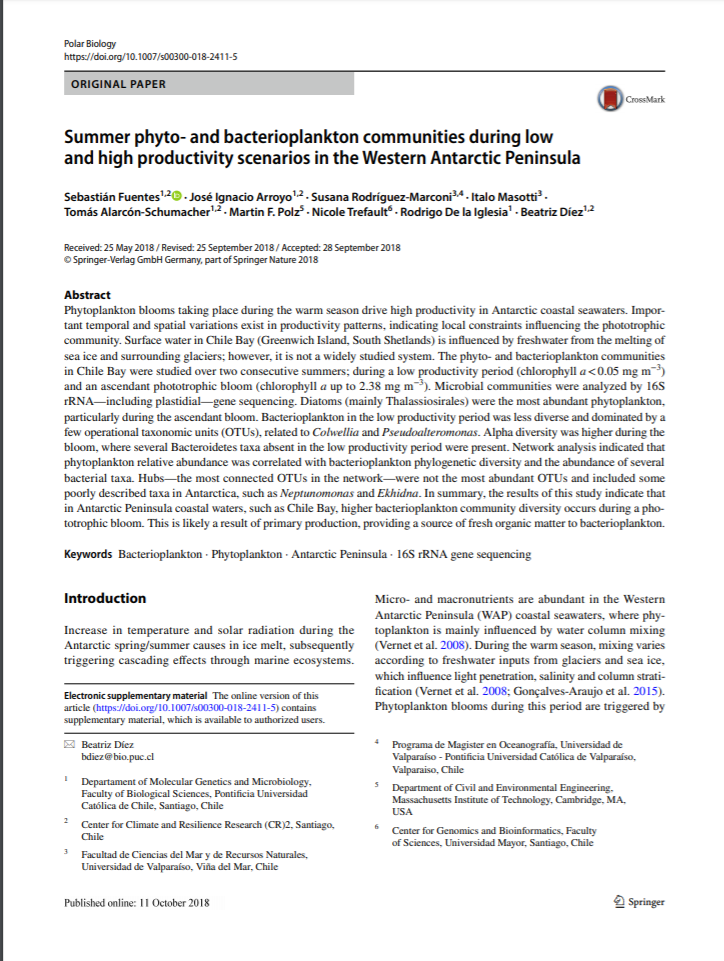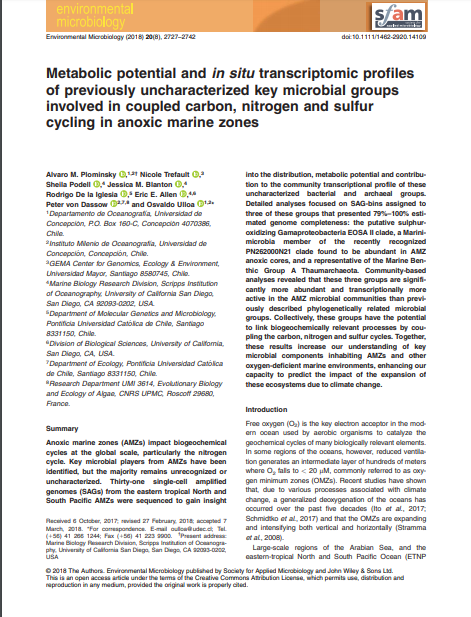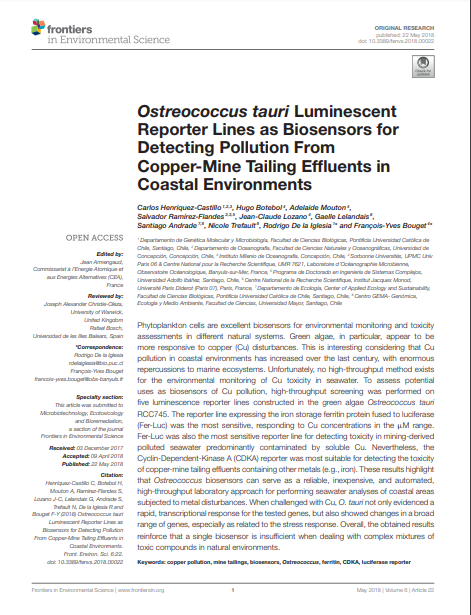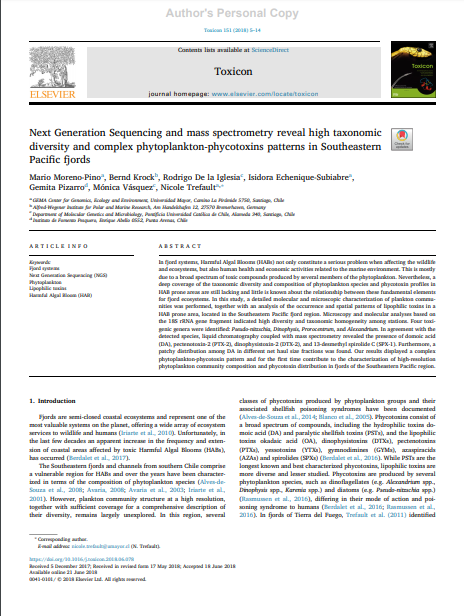Buscar
Mostrando ítems 1-6 de 6
Summer phyto- and bacterioplankton communities during low and high productivity scenarios in the Western Antarctic Peninsula
(SPRINGER, 2019)
Phytoplankton blooms taking place during the warm season drive high productivity in Antarctic coastal seawaters. Important temporal and spatial variations exist in productivity patterns, indicating local constraints ...
Metabolic potential and in situ transcriptomic profiles of previously uncharacterized key microbial groups involved in coupled carbon, nitrogen and sulfur cycling in anoxic marine zones
(WILEY, 2018)
Anoxic marine zones (AMZs) impact biogeochemical cycles at the global scale, particularly the nitrogen cycle. Key microbial players from AMZs have been identified, but the majority remains unrecognized or uncharacterized. ...
Ostreococcus tauri Luminescent Reporter Lines as Biosensors for Detecting Pollution From Copper-Mine Tailing Effluents in Coastal Environments
(FRONTIERS MEDIA SA, 2018)
Phytoplankton cells are excellent biosensors for environmental monitoring and toxicity assessments in different natural systems. Green algae, in particular, appear to be more responsive to copper (Cu) disturbances. This ...
Distinctive Archaeal Composition of an Artisanal Crystallizer Pond and Functional Insights Into Salt-Saturated Hypersaline Environment Adaptation
(FRONTIERS MEDIA SA, 2018)
Hypersaline environments represent some of the most challenging settings for life on Earth. Extremely halophilic microorganisms have been selected to colonize and thrive in these extreme environments by virtue of a broad ...
Next Generation Sequencing and mass spectrometry reveal high taxonomic diversity and complex phytoplankton-phycotoxins patterns in Southeastern Pacific fjords
(PERGAMON-ELSEVIER SCIENCE LTD, 2018)
In fjord systems, Harmful Algal Blooms (HABs) not only constitute a serious problem when affecting the wildlife and ecosystems, but also human health and economic activities related to the marine environment. This is mostly ...
Distinct oxygen environments shape picoeukaryote assemblages thriving oxygen minimum zone waters off central Chile
(Oxford University Press, 2020-09)
Oxygen minimum zones (OMZs) support ocean biogeochemical cycles of global importance. The OMZ off central Chile is characterized by seasonally variable oxygen concentrations due to upwelling events. Bacterial and archaeal ...




